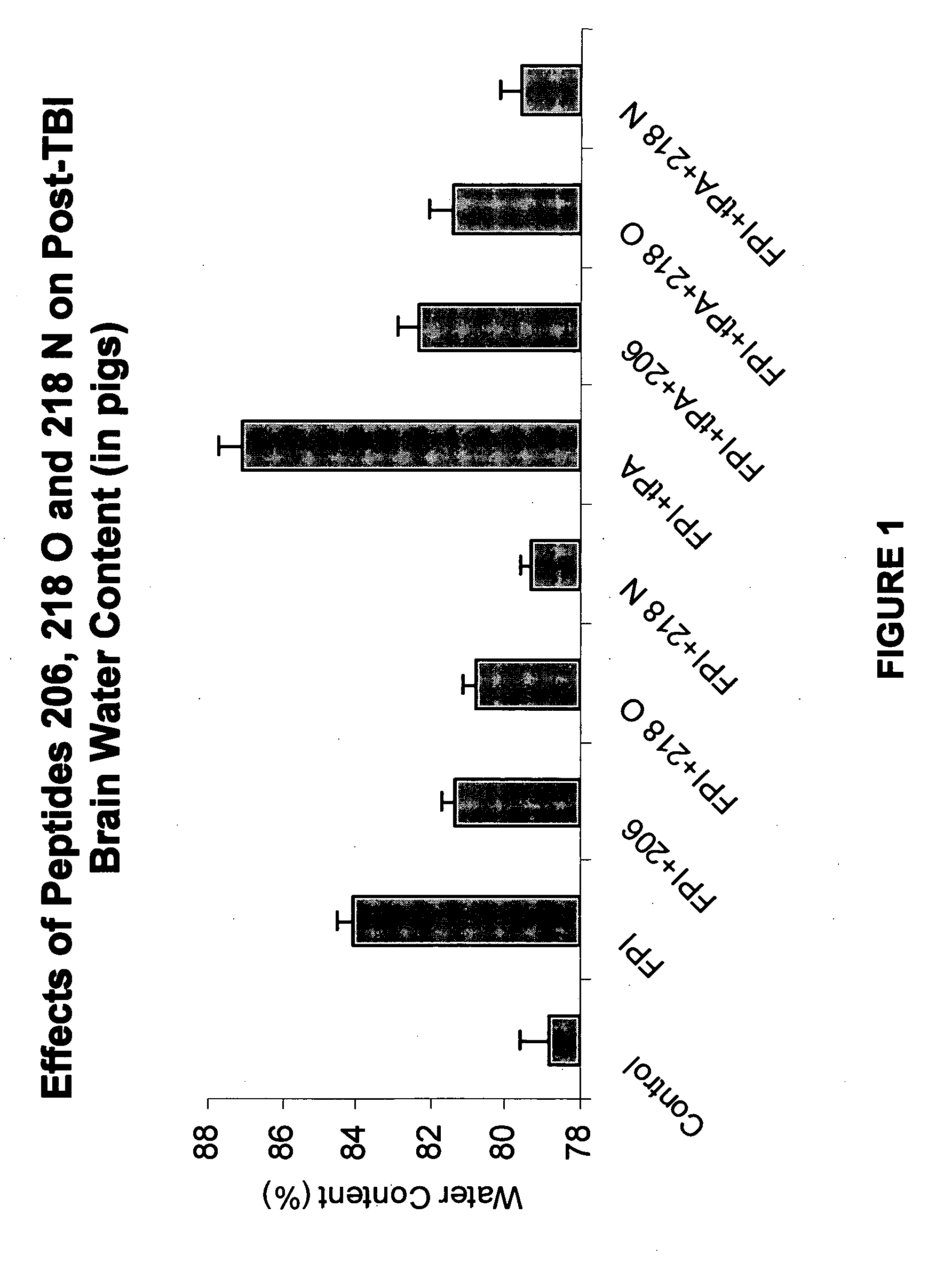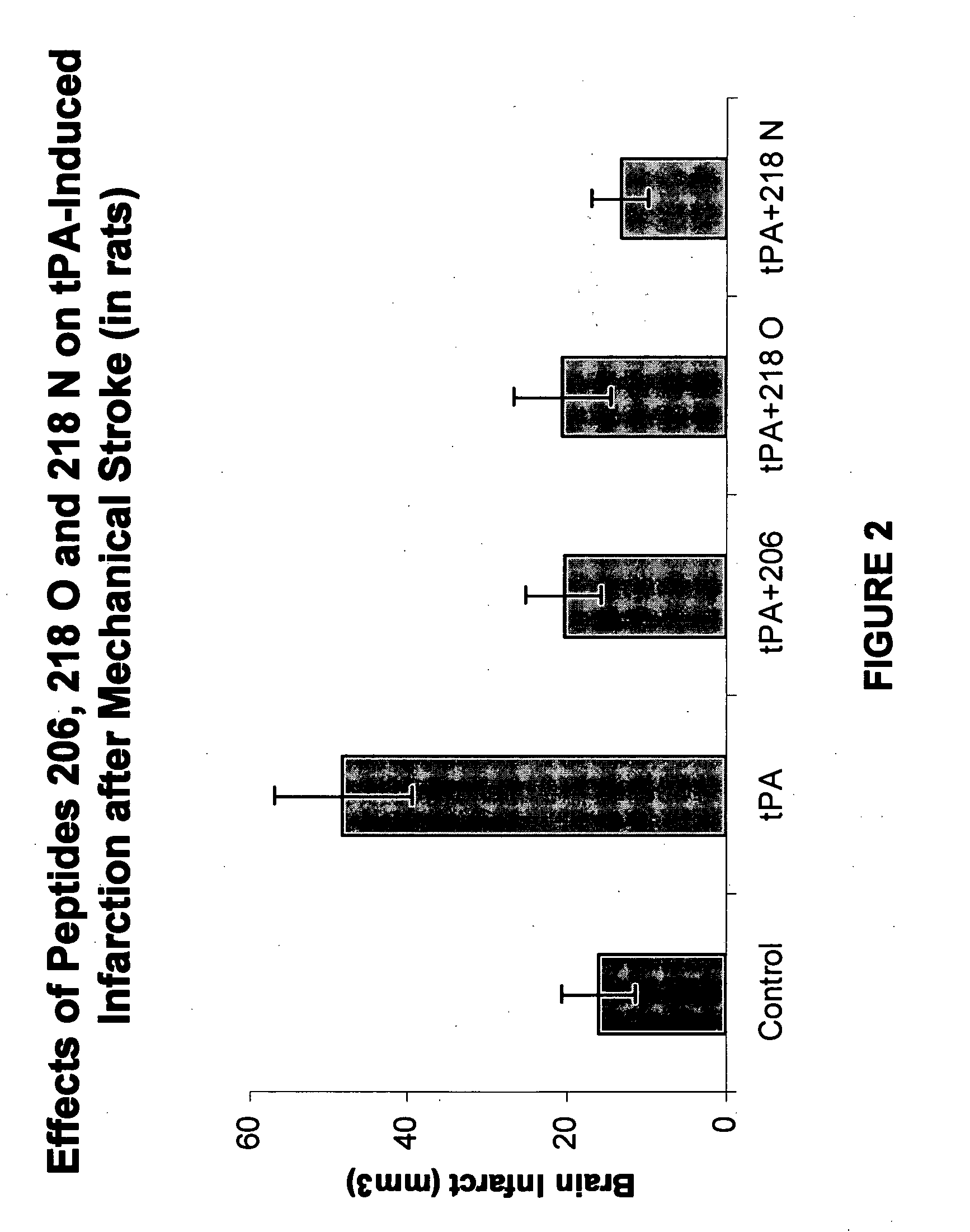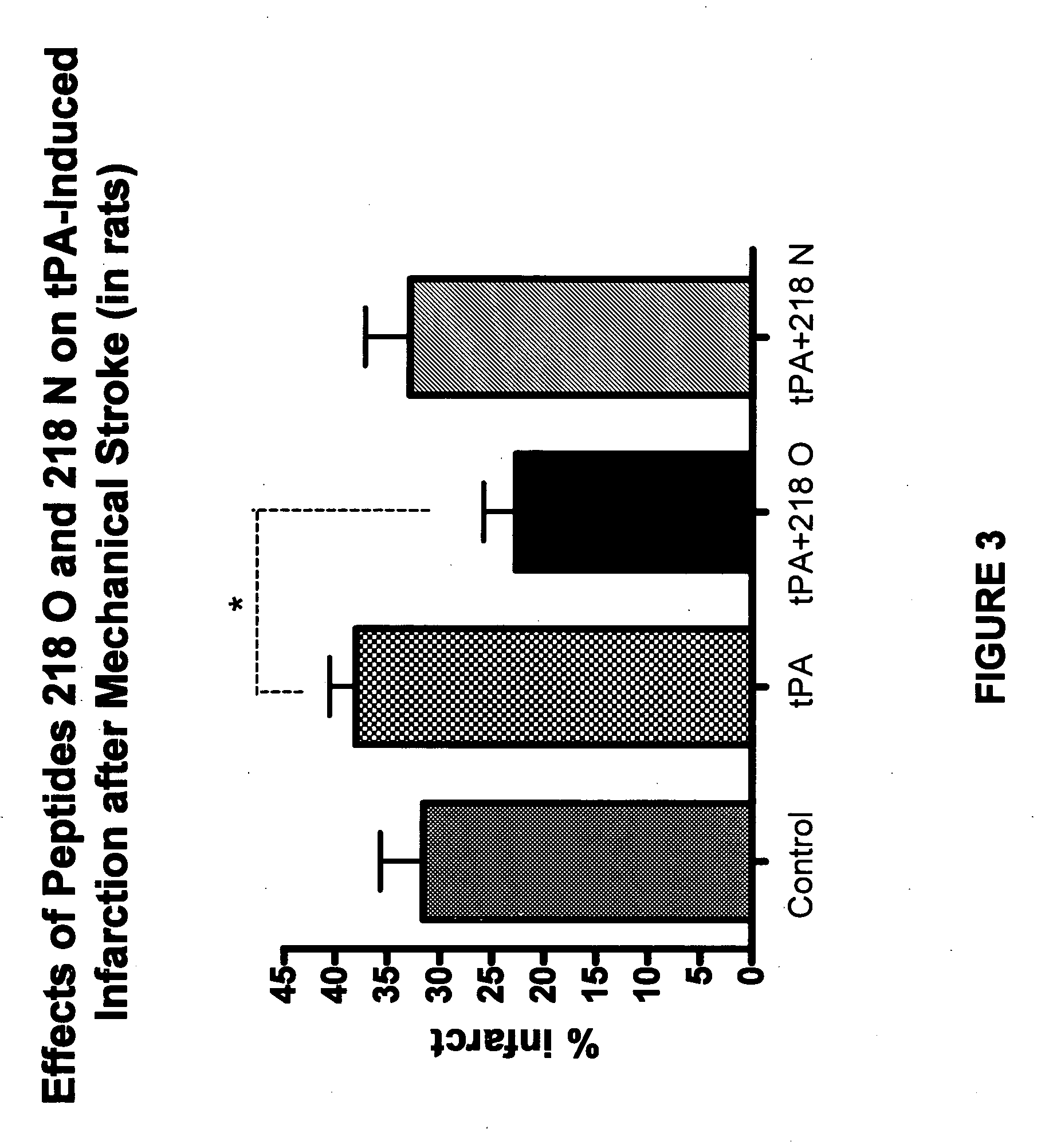Peptides derived from plasminogen activator inhibitor-1 and uses thereof
a technology of plasminogen activator and peptide, which is applied in the direction of peptide/protein ingredients, peptide sources, drug compositions, etc., can solve the problems of limited clinical use of tpa to approximately 3%, and achieve the effects of reducing tpa-induced brain edema and intracranial tpa, reducing tpa-induced mortality, and reducing tpa-induced mortality
- Summary
- Abstract
- Description
- Claims
- Application Information
AI Technical Summary
Benefits of technology
Problems solved by technology
Method used
Image
Examples
example 1
Effect of tPA and PAI-1 Derived Peptides on Brain Water Content after Fluid Percussion Brain Injury (FPI)
[0124]Endogenous tPA has been shown to be deleterious in models of brain trauma and to increase post trauma brain edema. To examine the effect of the PAI-1 derived peptides on endogenous tPA-induced increase in brain water content, piglets were given peptide 206, peptide 218 O, peptide 218 N (1 mg / kg, i.v.), or vehicle (0.9% saline) as a control 30 min prior to FPI (injury level 1.9±0.1 atm). In other set of experiments piglets were given tPA alone (2 mg / kg, i.v.), tPA with peptide 206, tPA with peptide 218 O, or tPA with peptide 218 N (1 mg / kg, i.v.) as is shown in FIG. 1.
[0125]Brain water content (BWC) was determined by measuring the wet and dry weights of the brain tissue and by using the formula BWC=wet weight-dry weight / wet weight×100. Data were analyzed by analysis of variants with a Fischer's post-hoc test. A P<0.05 was considered significant.
[0126]Posttraumatic brain edem...
example 2
Effects of tPA and PAI-1 Derived Peptides in Rats after Mechanical Obstruction and Embolic Stroke
[0128]The effect of the PAI-1 derived peptides on infarct size after transient mechanical obstruction of the MCA in rats treated with tPA was examined. tPA injected intravenously two hours after establishing reperfusion increased the infarct size from 16±4.6 to 48.333±8.7 mm3 (FIG. 2). Co-injection of peptide 206, peptide 218 O, or peptide 218 N significantly reduced the infarct size associated with the tPA treatment (FIG. 2) (P<0.01). Moreover, FIG. 2 shows that peptide 218 N was more effective than peptide 206 or peptide 218 O in preventing the tPA induced infarct size enlargement. The infarct size measured in the presence of peptide 206 was 20.333±4.8 while in the presence of peptide 218 N its size was only 13.3±3.6 mm3 (P<0.05; FIG. 2).
[0129]A similar experiment in which 50% of the tPA dose was given by bolus injection and the remainder was infused during 60 min showed that peptide 2...
example 3
Effect of PAI-1 Derived Peptides on the Opening of the BBB by tPA
[0132]C57 / B16 mice received intravenously saline, saline containing 10 mg / kg tPA with or without 10 μM peptide 206, peptide 218 O, or peptide 218 N prior to Evans blue evaluation. The brain content of Evans blue was quantified by absorbance at 620 nm.
[0133]FIG. 5 shows that tPA dramatically increased the BBB permeability. The addition of peptide 218 N to tPA prevented about 90% of this loss of BBB integrity, while peptides 206 or 218 O had no effect. Without wishing to be bound to a specific mechanism or theory, the capability of peptide 218 N to prevent the deleterious effect of tPA on the BBB may be attributed to conformational changes imposed by the peptide on tPA.
PUM
| Property | Measurement | Unit |
|---|---|---|
| Fraction | aaaaa | aaaaa |
Abstract
Description
Claims
Application Information
 Login to View More
Login to View More - R&D
- Intellectual Property
- Life Sciences
- Materials
- Tech Scout
- Unparalleled Data Quality
- Higher Quality Content
- 60% Fewer Hallucinations
Browse by: Latest US Patents, China's latest patents, Technical Efficacy Thesaurus, Application Domain, Technology Topic, Popular Technical Reports.
© 2025 PatSnap. All rights reserved.Legal|Privacy policy|Modern Slavery Act Transparency Statement|Sitemap|About US| Contact US: help@patsnap.com



